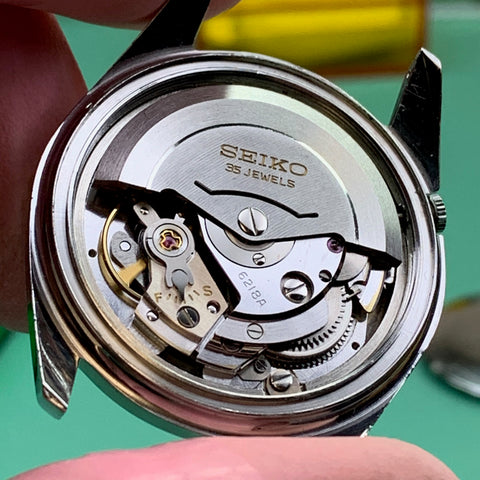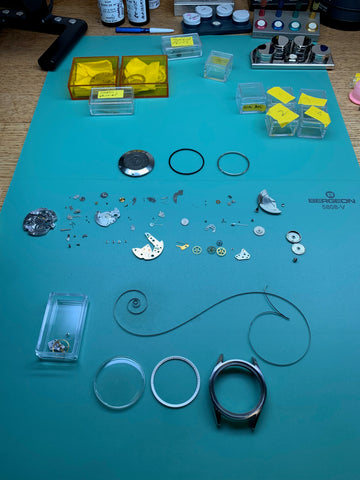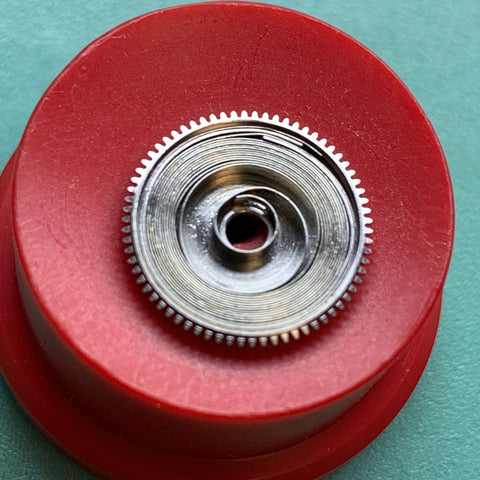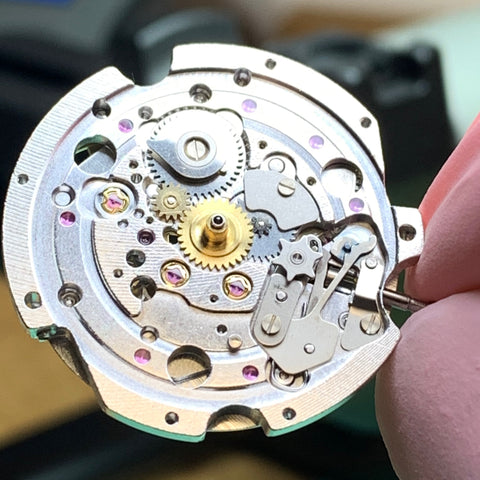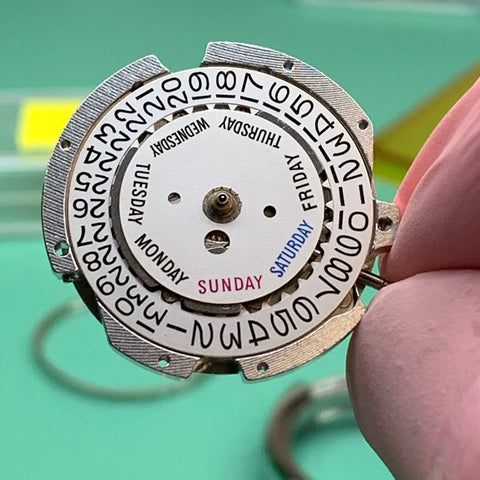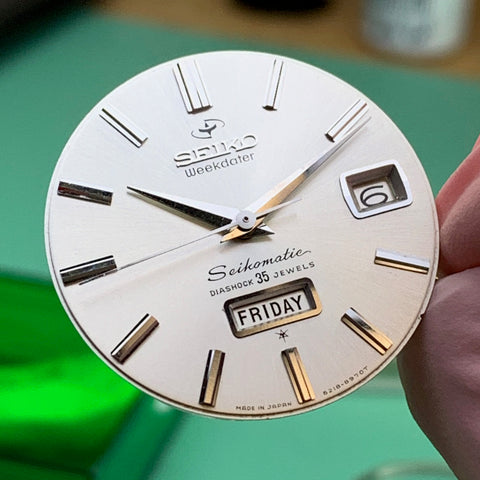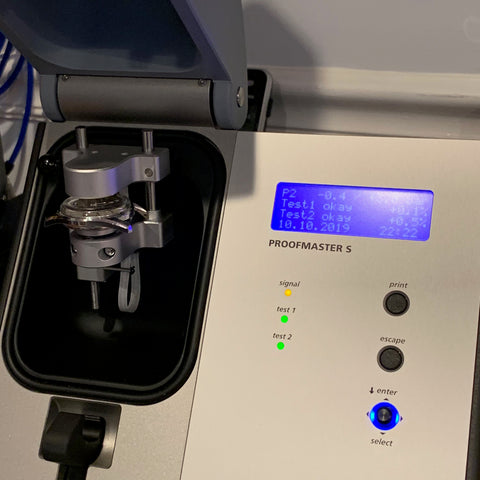I recently serviced this Seiko Seikomatic Weekdater 35 Jewel 6218-8970 from 1964 for a ClockSavant customer. As a family watch, it was worn during a long career in the military, wearing it through the Vietnam, Grenada, Panama, and first Gulf War conflicts. The Seiko 6218 is a higher-end movement with a relationship to the Grand Seiko line. The movement's finishing and component choices are more costly such as the plethora of "cap jewels." When you look at the movement and see flat tops on red jewels with a brass spring on-top, that's a cap jewel. They are held in-place with "shock springs." On the jewels other than balance jewels, the shock springs used on this watch are called Seiko Diafix. The Swiss had equivalent ones, referred to as Duofix, Incabloc Lyre, and other names. Diafix in-particular can be finicky and difficult. Many watchmakers leave them in-place and either don't oil them, or attempt to shoot oil through the jewel on the opposite side after cleaning them without disassembly in the cleaning machine. I have a very thorough approach of removing the jewels, locking the spring in-place without the jewel, cleaning, then re-installing. These cap jewels can become stuck, like cement, to the underlying jewel with dried gunky oil. I do not have faith in magic bubbles making their way into the tiny jewel hole and releasing this gunk, into which one blindly injects some oil. With this jewel spring, it can be very difficult to re-open it when there is no cap jewel in-place and I often have to replace the jewel spring without charging the customer. How much time does all this take? Quite a bit, and it's part of what's hidden behind a commitment to quality watch service-- what you don't see but you trust is happening. After servicing, this watch is now running near COSC standards at +4 seconds average across all positions. A new old stock crystal was installed and I was successful at renewing its water resistance.

